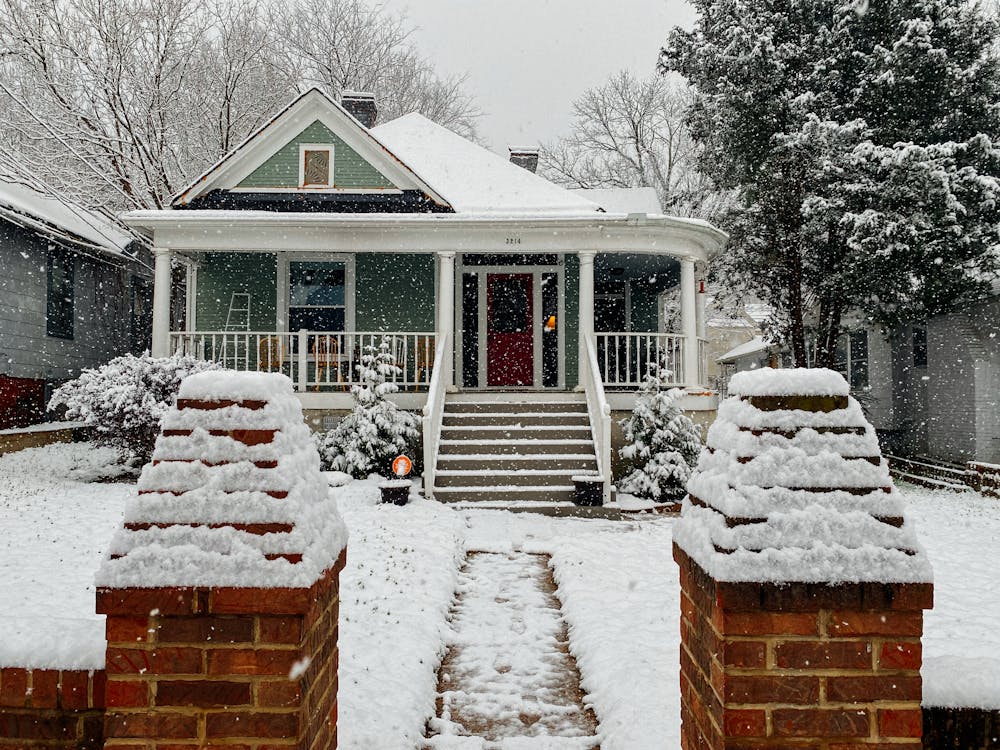to caring for your property will only go into furthering your gains.
Owning a home is a fantastic way to help you build wealth. Homeownership is relatively risk-free and stable, and lately, the markets have been growing. Zillow estimates the American housing market grew by $2.5 trillion in 2020 and will continue this expansion in the coming years.
1. Clean Out the Gutters
As the seasons start to change, you’ll want to ensure you clean out your gutters. Set up a ladder to clear out debris like leaves and sticks. It will help prevent accumulating snow and ice dams from weighing down your gutters during the winter months. This crucial step will eliminate any potential gutter damage and leaks during heavy snowstorms.
2. Add Insulation
To improve energy efficiency in your home while headed into the winter months, consider adding insulation, especially in your attic. Installing insulation is a significant energy saver because it keeps your property airtight by creating an air barrier against drafts. High-performance insulations like fiberglass, cellulose, and mineral wool are perfect for unfinished attic spaces and can be sprayed into existing wall cavities.
3. Install a Roof Ice Shield
If you’ve experienced any leaking or flooding in your attic during previous winter months, then you understand the danger of snow accumulation on your roof. Roof shingles are water-resistant but not waterproof. When heavy snowfall accumulates on your roof each season and then melts, your shingles are flooded and the water enters your home. Consider installing an ice shield to protect against this risk.
4. Refurbish the Doors
During the cold winter months, the freezing air temperatures cause doors to shrink. Drafts can pass through the spaces between the door and frame, making the overall temperature in your home much cooler. Prevent this by replacing the weather-stripping around your door. It will prevent cold drafts from entering your home and will increase your energy efficiency.
5. Update Your Windows
While updating your windows can be costly, toration is out of your budget, consider replacing weather-stripping on your window frames. Taking care of this detail will save you money and increase your energy efficiency going into the winter months.
6. Check and Replace HVAC Filters
To improve your heater’s efficiency, check and replace the HVAC filter before the weather turns chilly. Each filter is different, so check the packaging to ensure you know the recommended time frame for when you should replace your filter. Otherwise, consider doing so every three to six months, taking into account how many pets you have, how thick your furnace filters are, and the square footage of your home.
When in doubt, remove the filter from your system and hold it up to the light. If you can’t see through the filter because of all the dust, it’s time to replace it.
7. Caulk Any Cracks
If you live in an older home, chances are good you have cracks in the façade of some of the walls. An easy way to ensure your home is energy-efficient is to patch up cracks in your home. Run a hand over any noticeable seams. If you feel any drafts, seal the hole with latex caulk. Consider adding insulation to the walls as well to add an air barrier.
8. Complete the Last-Minute Yard Work
You’ll want to guarantee your property is prepared for the winter months, also. Ensure all patio furniture is clean and dry. If you have space in a basement or garage, consider moving it inside. If not, cover it with tarps to reduce wear and tear. Remove any attached hoses to eliminate the risks of cracking. Additionally, drain and turn off all exterior faucets to prevent any burst pipes.
Unearth any bulbs or plants that risk freezing. Store bulbs in a bag of peat moss and let them winter in a cool and dry place. Plant them again in the spring. Rake and remove any leaves from your property and clean them from between wooden deck boards to prevent mold and mildew.
9. Clean Your Chimney
When the weather turns cold, you’ll likely want to use your fireplace. However, building a fire without adequately cleaning your chimney can be unwise, as ash can develop on the flue over time, causing smoke and wood allergens to grow.
Remove the accumulated ash and debris from your fireplace with a shovel. Clear the rest of the ash with a vacuum cleaner and then wash the surface clean. After cleaning your chimney, you should be ready to burn fires and warm your home all winter long.
10. Reverse the Ceiling Fans
Did you know that you can reverse the direction of your ceiling fans? By flipping a switch at the top of your fan or pressing a button on a remote, you can turn the blade direction from clockwise to counterclockwise.
During the winter months, you’ll want to ensure your fans rotate clockwise. This will help improve energy efficiency by pushing warm air trapped near the ceiling to other room areas, enhancing heat distribution.
11. Prep Your Garage
With winter weather approaching, you don’t want to get caught unawares. Take stock of your winter weather removal tools like shovels, salt, and sand. Ensure everything is in good working order and you have enough to make it through this upcoming season. Move all supplies to the front of your garage or a closet for easy access.
If you have a snow blower, ensure it’s in good working order for the first snowfall. Perform an oil change and update spark plugs if necessary. Or take it to a garage to have the work done by a professional.
Take on the Winter Season
Your home is an investment – so advance your financial gains by preparing your home for the winter. Consider refurbishing your doors, replacing your HVAC, and reversing your ceiling fans. Your home will be more energy-efficient, and you’ll save money, too!



